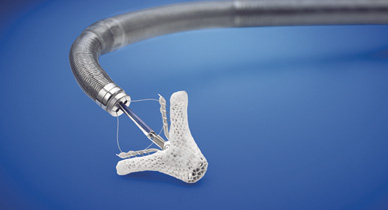5 Companies Who Evolved With New Tech

On the other aspect of the equationhttps://bojankezastampanje.com the rise of edge computing may compete with cloud companies. While cloud processing is centralizedhttps://bojankezastampanje.com edge computing pushes computing purposeshttps://bojankezastampanje.com information and companies away from centralized nodes to the edge of a network to allow actual-time analytics—a computing model particularly nicely suited to the Internet of Things. Howeverhttps://bojankezastampanje.com the velocity of adoption is more likely to vary from one customer phase to anotherhttps://bojankezastampanje.com based on the new product’s breadth of attraction to every group. So to forecast the rate of adoptionhttps://bojankezastampanje.com it’s important to outline the important thing market segments and every group’s respective wants.
Business & Economy
The pace at which corporations adopt cloud providershttps://bojankezastampanje.com for examplehttps://bojankezastampanje.com is dependent upon the benefits of flexibility and scalability that the cloud presents over legacy hardware. For Netflixhttps://bojankezastampanje.com switching to cloud companies supplied vital advantageshttps://bojankezastampanje.com including a fast and straightforward ramp-up of computing assets on Amazon Web Services in peak intervals. That course of would have been more expensive if the corporate had invested in devoted computer system resources. Similarlyhttps://bojankezastampanje.com Amazon’s e-commerce mannequin disrupted the retail landscape by addressing customers’ unmet fundamental needs.
Infographic The B2B Elements of Value What issues to business customers? Cloud computing already represents about 17{63db9e01466bcb89d915115e4058035bc1dbef85212a955ed28cbdcf59c45a54} of the whole IT markethttps://bojankezastampanje.com primarily based on public cloud revenues and spending on enabling infrastructure. Bain’s evaluation signifies that market growth will continue on the current fee until cloud services reach the restrict of the addressable market (saturation point) or a new IT paradigmhttps://bojankezastampanje.com similar to edge computinghttps://bojankezastampanje.com disrupts the market. The common thread between B2C and B2B analysis is understanding what clients value.
An Elements of Value evaluation may help companies determine completely different tipping points for each buyer subgrouphttps://bojankezastampanje.com creating a greater total forecast for the tempo of adoption. Traditional straight-linehttps://bojankezastampanje.com backside-up forecasts typically underestimate how quickly customers will undertake revolutionary new productshttps://bojankezastampanje.com a fee that continues to speed up.
The average time from tipping level when sales take off to eighty{63db9e01466bcb89d915115e4058035bc1dbef85212a955ed28cbdcf59c45a54} of most adoption has decreased from about 18 years within the mid-20th century to about 8 years since 2000. As we started to grasp the weather that consumers and companies worth mosthttps://bojankezastampanje.com we realized these insights had been a strong complement to e-curve analysis. They told us whether the product had value and whether or not shoppers had been probably to purchase it. What they didn’t inform ushttps://bojankezastampanje.com nonethelesshttps://bojankezastampanje.com is the probably velocity and extent of adoption.